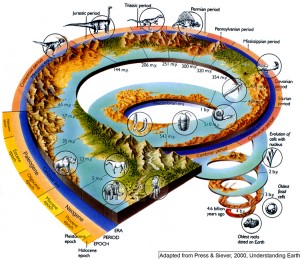Every breed of scientist is coming under increasing pressure and encouragement to communicate their research and knowledge to the wider public. For each discipline, sub-discipline, and not-quite-a-discipline, there are differences in the way science needs to be, and should be communicated, depending on the appeal of the subject, and the target audience(s). A recent paper by Iain Stewart (from TV, and a professor of some sort – he even has his own Wikipedia page!) and Ted Nield (sci-comm jedi, and editor of Geoscientist magazine), set out to explore how geoscientists can effectively communicate and engage the wider public with their science. How do we get people from taxi drivers, ice-cream men, the barrister at Starbucks, you, and every other person out there interested in geoscience, assuming of course that they want to (which, as you’ll see, a surprising many don’t). Their study is pretty wizard, but unfortunately it’s stuck behind a paywall, which means fewer people will be aware of what I reckon is a pretty important study for geologists to get hold of, and equip themselves with (Note: I have spoken to Iain about this, and he’ll hopefully be making a copy available somewhere!) So I just kinda wanted to summarise the key issues and points raised, as well as the suggestions made to overcome engagement obstacles to help make geologists more effective science communicators.
Co-evolution, the greatest show on Earth?
One of the great questions that Palaeontology poses is how did life and the Earth co-evolve together? This is especially so in the case of early life during the Phanerozoic period (540 million years ago until now), when complex multi-cellular life took off and ultimately came to dominate the planet. When one considers the vast number of potential factors involved in this, it can be pretty overwhelming. To start off with, you have organisms themselves which adapt through altering their physical appearance and functionality. Driving this, you have the environment and the ecosystems in which organisms dwell. How many parameters can you think off that may have some effect, any effect, on the life of an organism or population of organisms, that could have some impact on evolutionary trajectory? There’s a lot, right? Some of the major environmental factors include oxygen and carbon dioxide concentrations, nitrogen, temperature, humidity. You can find variations of almost any environmental variable nowadays, and correspond it to variability in the local biota. But what about during the Phanerozoic? How much can we still see left preserving this great orchestra of ever-changing life and planet?

